It was about 12 years ago when powerful 2-stroke scooters were no longer produced due to manufacturers’ self-regulation, and they were gradually becoming less common on the streets.
I had an opportunity to receive multiple malfunctioning Live Dio models (the last model equipped with a 2-stroke engine), and I gradually worked on combining their functioning parts into one unit between four-wheel maintenance jobs.
The usable parts were the frame from the standard grade AF34 model and the engine from the higher-powered ZX (AF35 model). After connecting these, they worked perfectly without any issues, so I repainted the entire vehicle, replaced the seat, and sold it.
Recently, this Live Dio ZX specification was brought in because the engine had become difficult to start.
1995 model AF34+AF35 engine, mileage unknown (approximately 30,000 km since sale)
Since I had overhauled the carburetor and replaced the auto choke two years ago, I thought the carburetor interior wouldn’t be a concern, but upon checking, I found dirt accumulated in the center passage of the main jet.
New Honda Genuine Motorcycle Parts Live Dio Carburetor Gasket
After cleaning, the starting issue was resolved, so I returned it to the customer. However, two weeks later, it suddenly stalled while riding. The engine wouldn’t start immediately, and although it would start after a while, it would stall again after riding for some time. This pattern repeated as the customer somehow managed to get to our shop.
The customer said “it feels like running out of gas,” so I disassembled the carburetor again and cleaned the fuel inlet area that hadn’t been cleaned before, using compressed air.
I also found foreign matter in the fuel strainer upstream and replaced it with a new one.
I had doubts whether such fluffy foreign matter could block the fuel, but…
After recleaning the carburetor and replacing the strainer, the engine ran without stopping during a test drive to and from Kyomi Pass with no issues at all.
I never experienced the stalling symptom while driving and returned it to the customer with some lingering doubts, but three days later, it stalled again while driving.
However, it was running perfectly fine when it arrived at the shop. The vacuum fuel pump that I hadn’t checked previously showed no issues with sealing, and the plug tip’s combustion condition also seemed fine.
At this point, I pulled out a later model carburetor that I had stored away in a drawer and installed it.
I was surprised that it fit and worked right away with bolt-on installation.
Working between four-wheel maintenance jobs and proceeding by trial and error, the diagnosis wasn’t progressing as I’d hoped. Feeling that I needed to experience the stalling symptom myself to move forward, I decided to spend extra time test riding in the local area.
It ran perfectly fine even with the later model carburetor. Simple machines are so enjoyable.
After riding for about an hour, when passing over a large bump, the engine stalled at the moment the front fork received the impact. It couldn’t be restarted.
This seemed to be an electrical system malfunction. It felt like the ignition was suddenly cut off.
Returning to the shop, I opened the front cowl that had received the impact and discovered an aftermarket CDI (Capacitor Discharge Ignition) installed, confirming the source of the problem.
When I wiggled the CDI connector while the engine was idling, it stalled. It was clearly an internal wire break.
I partially removed the resin coating, repaired the broken wire connection with solder, and resealed it as a temporary fix until the parts arrived.
When discussing with the customer about the lack of power climbing Kyomi Pass, they mentioned it used to climb more powerfully.
So I measured the engine compression pressure and found it was 5kgf/cm² against a standard value of 7kgf/cm². With this measurement, even with the ignition system restored to normal, it wouldn’t run well.
Fortunately, I had a complete set of genuine engine top-end parts, so I performed an overhaul and completed the job.
Looking at the removed piston, I found that one of the two piston rings was missing. Was this some kind of friction reduction “tuning”? (sweating). No wonder it didn’t last long.
After refreshing the cylinder area, the compression pressure was fully restored.
2-stroke vehicles from the 1990s have become rare. I’d be happy if the customer continues to take good care of this one in the future.
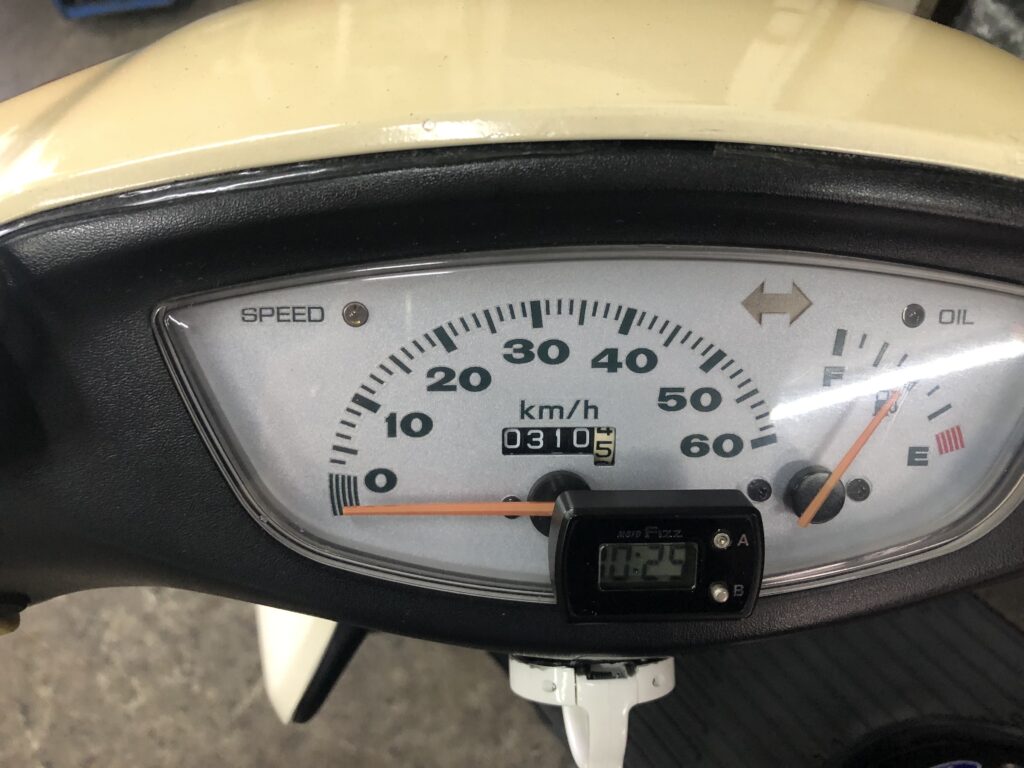
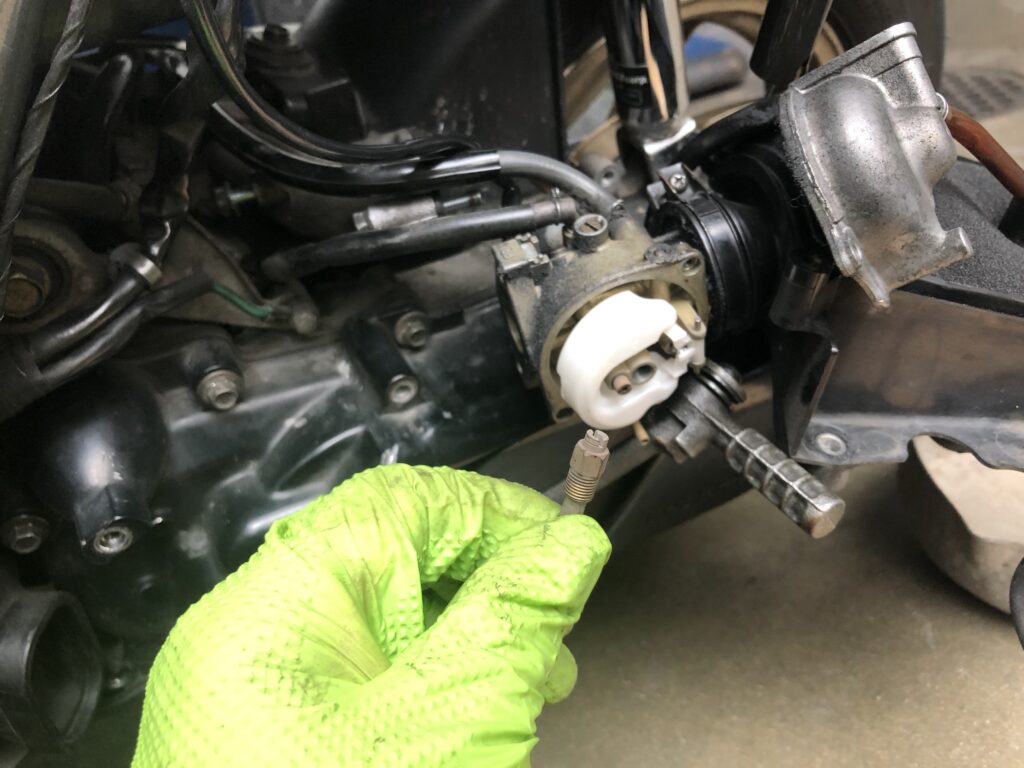
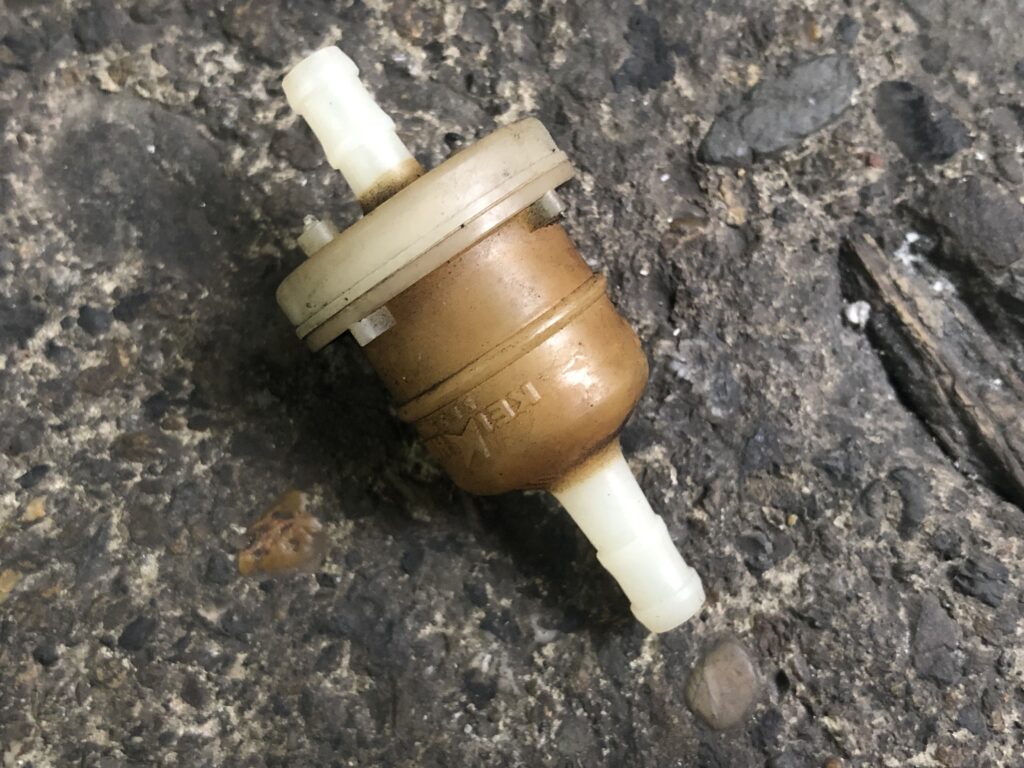
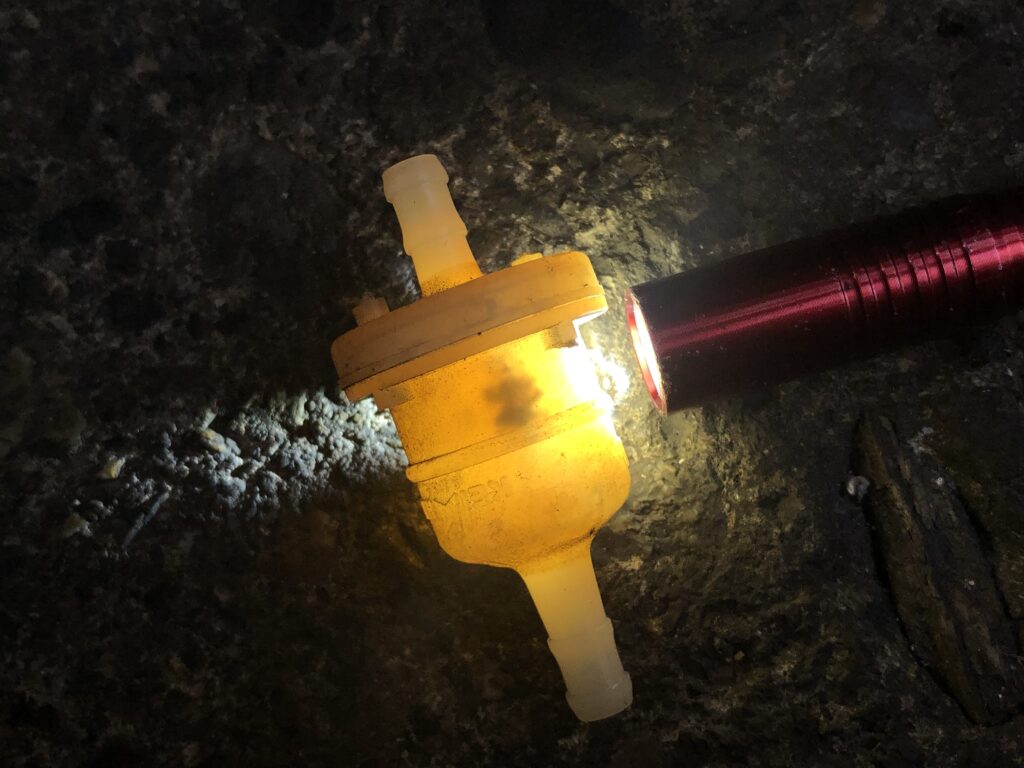
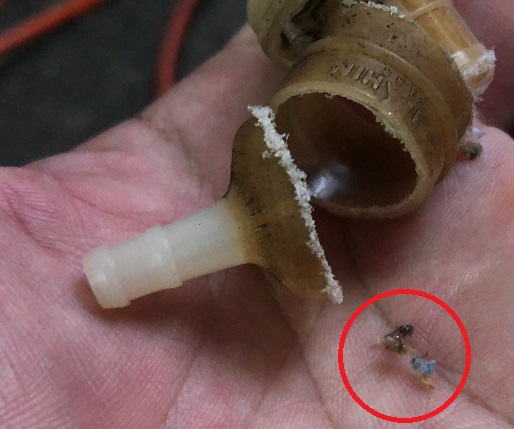
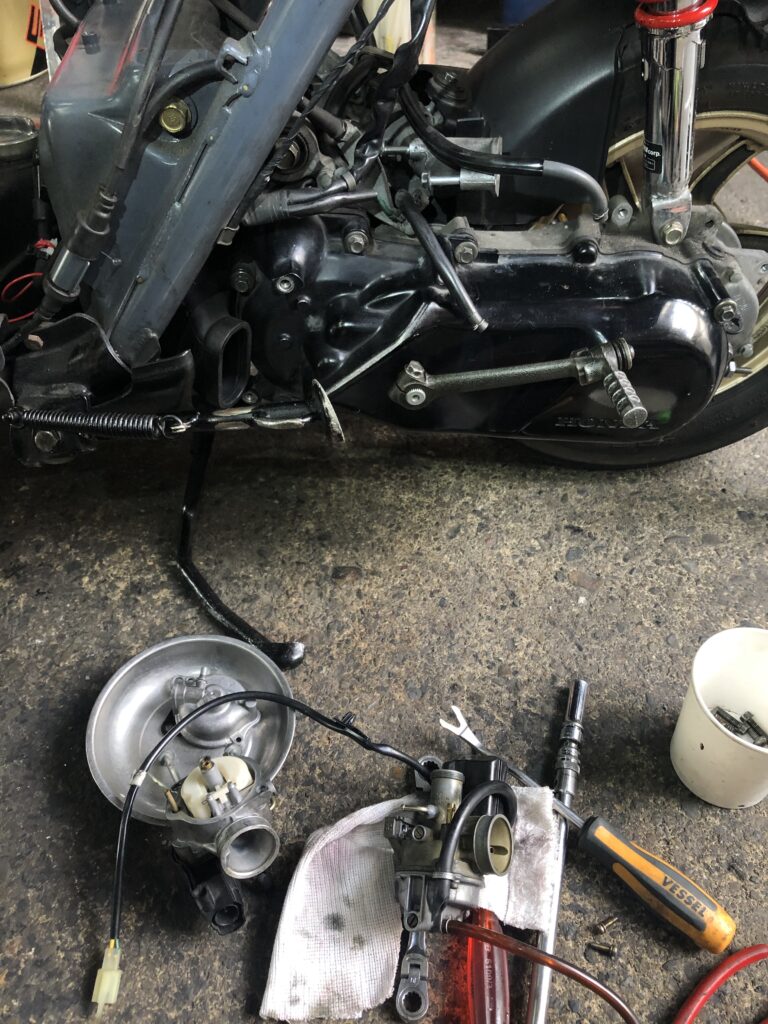
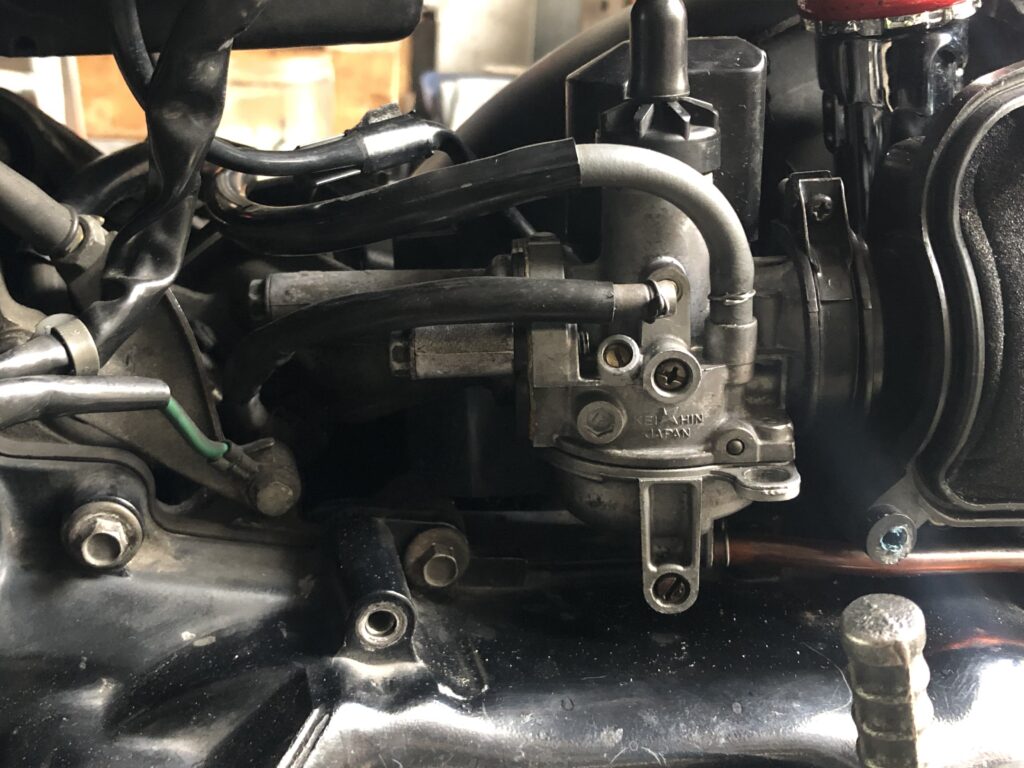
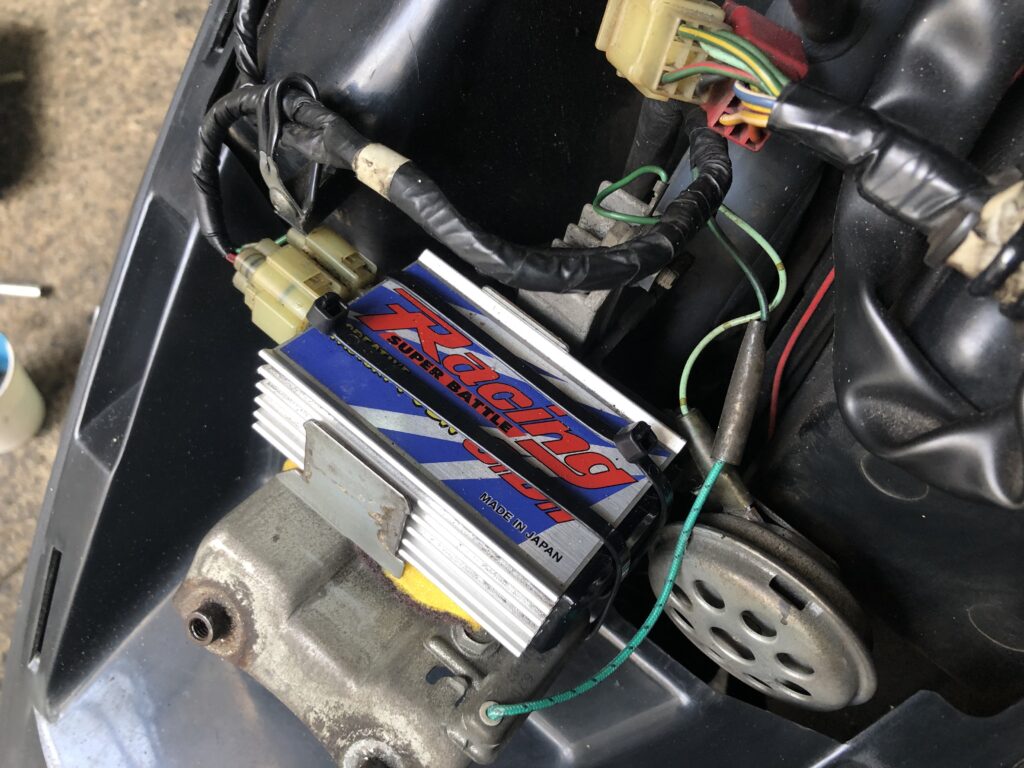

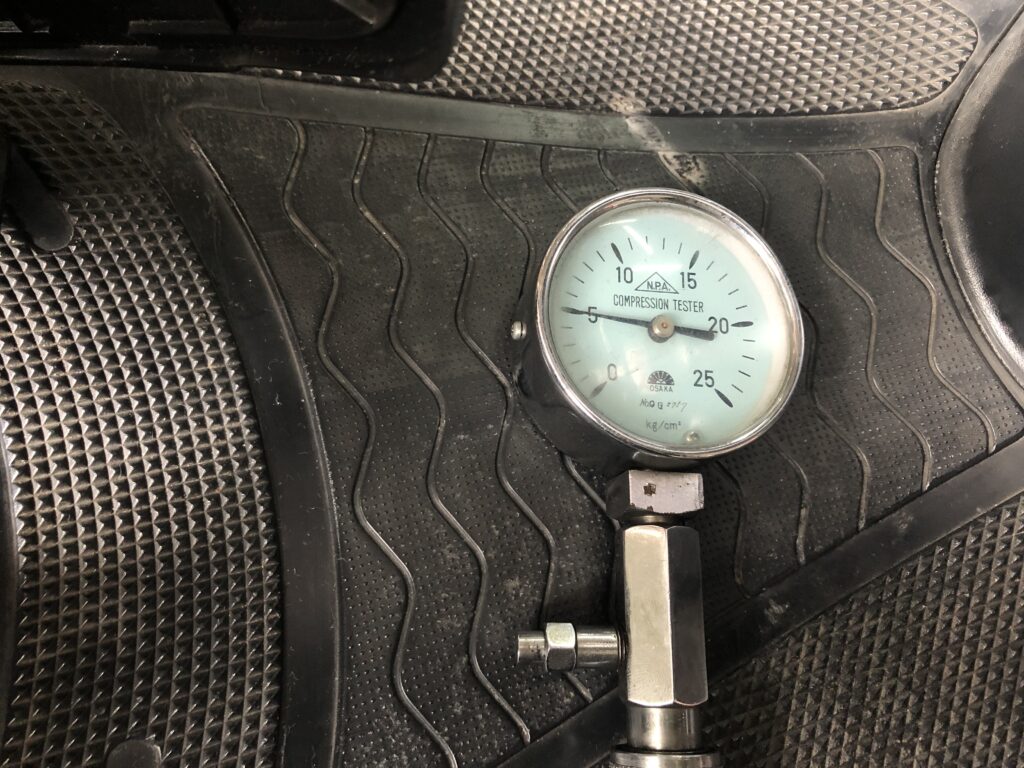


Leave a Reply